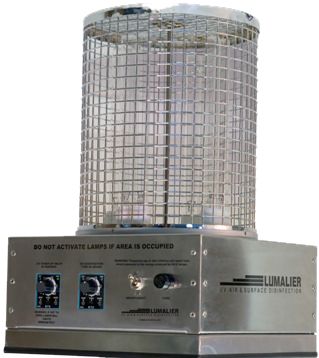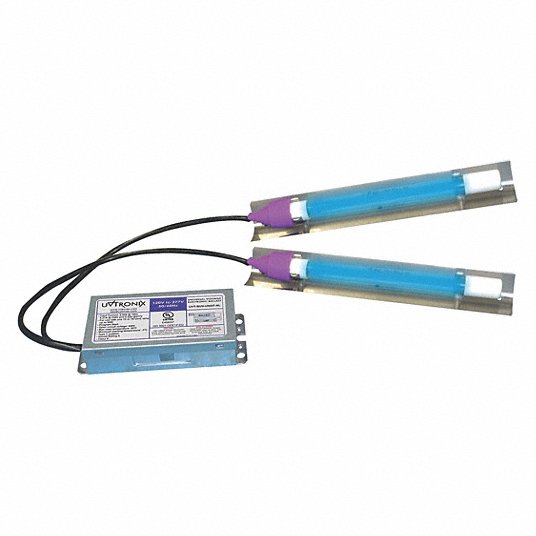Future-Proofing Your Space: Incorporating UV Surface Disinfection for Ongoing Security
Future-Proofing Your Space: Incorporating UV Surface Disinfection for Ongoing Security
Blog Article
Utilizing the Prospective of UV Disinfection: Shielding Health and Hygiene
As the world faces the continuous pandemic and the constant threat of transmittable conditions, the value of preserving wellness and health has never been extra noticeable. In this context, taking advantage of the potential of UV sanitation becomes an encouraging service. UV sanitation, a technology commonly used in different industries, has confirmed efficient in removing unsafe microorganisms. However, there is far more to explore behind the scientific research of UV disinfection and its applications. From understanding the systems at play to applying this technology in our day-to-days live, this conversation aims to drop light on the possibility of UV disinfection and its function in guarding our health and hygiene.
Understanding UV Disinfection
UV disinfection is an extremely efficient and commonly made use of method for making certain and eliminating harmful pathogens health and hygiene. This technique utilizes ultraviolet (UV) light to inactivate microorganisms by harming their DNA and stopping them from reproducing. UV sanitation is particularly effective against bacteria, infections, and various other bacteria that can trigger illness and infections.
The principle behind UV disinfection is easy yet powerful. When UV light is released at a certain wavelength, it permeates the bacterium's cell wall and disrupts its hereditary product. This procedure, called photodissociation, leads to the formation of thymine dimers, which prevent the bacterium from replicating and providing it safe. UV sanitation can be used in various setups, consisting of water treatment plants, healthcare centers, food processing industries, and air filtration systems.
Among the advantages of UV sanitation is its capability to effectively and effectively eliminate a vast array of virus without the demand for ingredients or chemicals. Unlike various other disinfection techniques, such as chlorine or ozone, UV disinfection does not present hazardous by-products or chemical deposits into the environment. Furthermore, UV disinfection is a non-contact process, which indicates that it does not call for physical call with the microbes, reducing the risk of cross-contamination.

The Scientific Research Behind UV Sanitation
The effectiveness of UV sanitation exists in its capacity to interrupt the hereditary product of microbes, rendering them incapable to duplicate and consequently eliminating their dangerous possibility. UV, or ultraviolet, radiation is a type of electro-magnetic radiation with wavelengths much shorter than noticeable light. It is classified right into 3 types: UV-C, uv-b, and uv-. UV-C radiation, specifically, has the shortest wavelength and the highest possible energy. This high-energy UV-C radiation is most effective in sanitation applications since it can permeate the cell wall surfaces of bacteria and harm their DNA or RNA.
When microorganisms are exposed to UV-C radiation, the energy is soaked up by their genetic material, creating bonds to break and developing chemical responses that disrupt their capability to replicate. This protects against the bacteria from spreading and reproducing infection. UV disinfection is specifically effective against viruses, microorganisms, and fungis, consisting of common pathogens such as Escherichia coli, Salmonella, and Flu.
The scientific research behind UV disinfection is supported by considerable research study and studies. It has been shown that exposure to an adequate dosage of UV-C radiation can accomplish a high degree of disinfection, usually exceeding 99.9% efficacy in killing microbes. It is vital to keep in mind that the effectiveness of UV disinfection depends on various variables, consisting of the intensity of UV-C radiation, exposure time, distance from the UV source, and the sensitivity of the microbe to UV radiation (uv surface disinfection).
Applications of UV Disinfection
Given the extensive research study and efficiency of UV sanitation in disrupting the hereditary product of microbes, it is necessary to check out the different practical applications of this technology. UV disinfection has actually verified to be a useful device in a broad array of markets where preserving a safe and clean atmosphere is important.
One significant application of UV sanitation remains in medical care setups. UV light can be utilized to sanitize surfaces, equipment, and also the air in health centers and medical facilities. This aids to reduce the danger of healthcare-associated infections and makes certain a safer atmosphere for individuals and health care workers.
An additional vital application remains in the food and beverage industry. UV sanitation is utilized to treat water and remove harmful microorganisms, such as E. coli and Salmonella, from the production process. uv surface disinfection. This makes certain the security and quality of the items we consume
UV disinfection is also extensively made use of in water treatment plants and wastewater therapy facilities. It is an effective approach for damaging unsafe bacteria, infections, and bloodsuckers that can be present in water sources. This helps to provide tidy and risk-free drinking water to areas and shield the atmosphere from pollution.
Additionally, UV sanitation is used in the pharmaceutical industry to sterilize devices and keep the stability of items. It is also made use of in research laboratories and study facilities to stop contamination and make sure accurate outcomes.
Benefits of UV Sanitation Technology
One significant advantage of employing UV disinfection technology is its ability to properly remove microorganisms without using severe chemicals. This is specifically useful in numerous settings, such as health care facilities, water treatment plants, and food handling markets, where the visibility of damaging virus poses a considerable threat to public health and wellness and security.
Unlike traditional sanitation approaches that rely on chemicals like chlorine or ozone, UV disinfection innovation read this makes use of ultraviolet light to target and ruin the DNA of microbes, successfully neutralizing their ability to duplicate and trigger infections. This process not just removes the requirement for potentially harmful chemicals but additionally reduces the risk of chemical deposit or by-products staying in the treated setting.

In addition, UV sanitation modern technology is eco-friendly. As it does not rely upon the use of chemicals, it gets rid of the need for their disposal, manufacturing, and transport, lowering the overall carbon impact related to sanitation procedures. Furthermore, UV sanitation systems have a longer life expectancy compared to chemical-based methods, leading to much less frequent substitute and further reducing waste.
Executing UV Sanitation in Daily Life
To efficiently implement UV disinfection in every day life, companies and individuals can incorporate portable UV sterilizing tools into their hygiene routines and cleaning methods. These gadgets are made to discharge ultraviolet light, which has been proven to eliminate or suspend a large range of bacteria, consisting of microorganisms, infections, and fungi. By using portable UV sanitizing gadgets, individuals can sanitize typically touched surfaces and items, such as cell phones, tricks, doorknobs, and laptop computers, minimizing the risk of spreading out germs and infections.
In enhancement to incorporating portable UV sterilizing devices, it is necessary to comply with correct standards and suggestions for reliable UV disinfection. This consists of ensuring that the tool is used correctly and for the recommended period to accomplish optimal sanitation results. It is additionally vital to focus on security actions, such click to read more as using safety eyeglasses and avoiding direct exposure of the UV light to the skin.

Additionally, companies can execute UV disinfection modern technology in different setups to improve health techniques. Health centers and health care facilities can utilize UV sanitation robots to sterilize patient rooms, operating movie theaters, and various other high-touch locations. Food processing markets can integrate UV sanitation systems into their assembly line to improve food safety and protect against contamination.
Conclusion
To conclude, UV sanitation modern technology holds terrific prospective in securing health and wellness and health. By harnessing the power of ultraviolet light, it effectively removes harmful microorganisms and decreases the danger of official site infections. This technology can be applied in various setups, such as health centers, water treatment facilities, and public spaces, offering a reliable and secure method of sanitation. With its various benefits, UV sanitation is a useful device for maintaining a tidy and healthy setting.
Unlike various other disinfection approaches, such as chlorine or ozone, UV disinfection does not present unsafe byproducts or chemical residues right into the environment. It is important to note that the efficiency of UV sanitation depends on numerous elements, including the strength of UV-C radiation, direct exposure time, distance from the UV source, and the sensitivity of the microbe to UV radiation.
One more advantage of UV disinfection modern technology is its capability to give continual and fast sanitation. Unlike guidebook cleaning approaches, which can be taxing and require significant labor, UV sanitation systems can be automated and operate continuously, guaranteeing consistent disinfection without human treatment.To effectively carry out UV sanitation in daily life, organizations and individuals can incorporate mobile UV sterilizing tools into their hygiene routines and cleaning methods.
Report this page